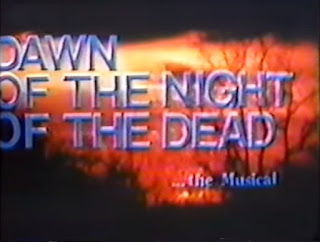Directed by:
Alexandre Astruc
Even though he died nearly half-a-century before the advent of motion pictures, Edgar Allan Poe probably deserves a place as one of the ten most important people of all time when it comes to horror cinema. Sounds a bit odd since he didn't even live to see horror cinema, but I can't think of too many other authors as prevalent in the genre throughout film history. There has been literally no period of time since the infancy of cinema that his works haven't been filmed in mass quantity. Thus far, there have been well over four hundred adaptations... and that's just counting official ones and not ones otherwise heavily influenced by him in which case we'd reach up into thousands. There's been no real slowing down either: around twenty Poe films and TV productions (including a mini-series) are in various stages of production as we speak. What other genre author can you say that about? Especially one who's been dead nearly 200 years yet whose name is still such a marketable commodity in horror?
This particular adaptation, made just a few years after the famous Roger Corman / Vincent Price one, was produced for French TV by Radiodiffusion-Télévision Française, runs 37 minutes and was filmed in beautiful black-and-white. It's also an extremely faithful version; perhaps the most faithful of all. The only dialogue comes in the form of the doomed protagonist's thoughts / narration, which are all quoted verbatim from the story. If you're familiar with the tale, nothing that occurs here is going to be any kind of revelation. It's rather the execution itself that continues to impress.
During the Spanish Inquisition, a nameless prisoner (Maurice Ronet) is led through corridors to a tribunal of monks, who promptly sentence him to death as white candles burn. Keeping in tune with the story, no explanation is ever given as to why. The man collapses, maintaining only a slight bit of consciousness as guards carry him further into the bowels of the torture chamber. He's thrown into a pitch black cell where he first assumes he's been entombed alive. The man carefully scours the cell and almost falls into a deep pit swarming with serpents then finds a jug of water, takes a drink and passes out. When he awakens he's strapped down to a table by an intricate rope pattern as the razor-sharp pendulum emerges from the ceiling and begins its slow descent. And, just in case he happens to free himself from this death trap, there's a back-up plan featuring a heated wall that closes in on its victim...
While this isn't as sumptuous as Corman's loose take on the story or as visually imaginative as Jan Svankmajer's 14-minute THE PIT, THE PENDULUM AND HOPE (1983), this is still an excellent version in its own right. For starters, it's one of the most faithful Poe adaptations you'll find, which makes it a must-see for fans of the author. Second, the camerawork, art direction, shooting locations, atmosphere and shadowy photography (from Nicolas Hayer) are all excellent in establishing the perfect gloomy mood. Third, the most memorable passages from the story have been carefully extracted for the narration. Taking up over ten minutes of screen time, this also boasts the longest pendulum scene I think I've seen.
Despite being one his most famous works, Poe's 1842 short story is actually not among his most adapted. It has however managed to spawn more consistently good film adaptations than perhaps any other. Aside from Astruc, Svankmajer and Corman's takes, Harald Reinl's THE TORTURE CHAMBER OF DR. SADISM (1967) and Stuart Gordon's Pit and the Pendulum (1991) are both worth a look. The director also adapted Poe's The Fall of the House of Usher (La chute de la maison Usher) for the TV series Histoires extraordinaires in 1981.
★★★1/2
































